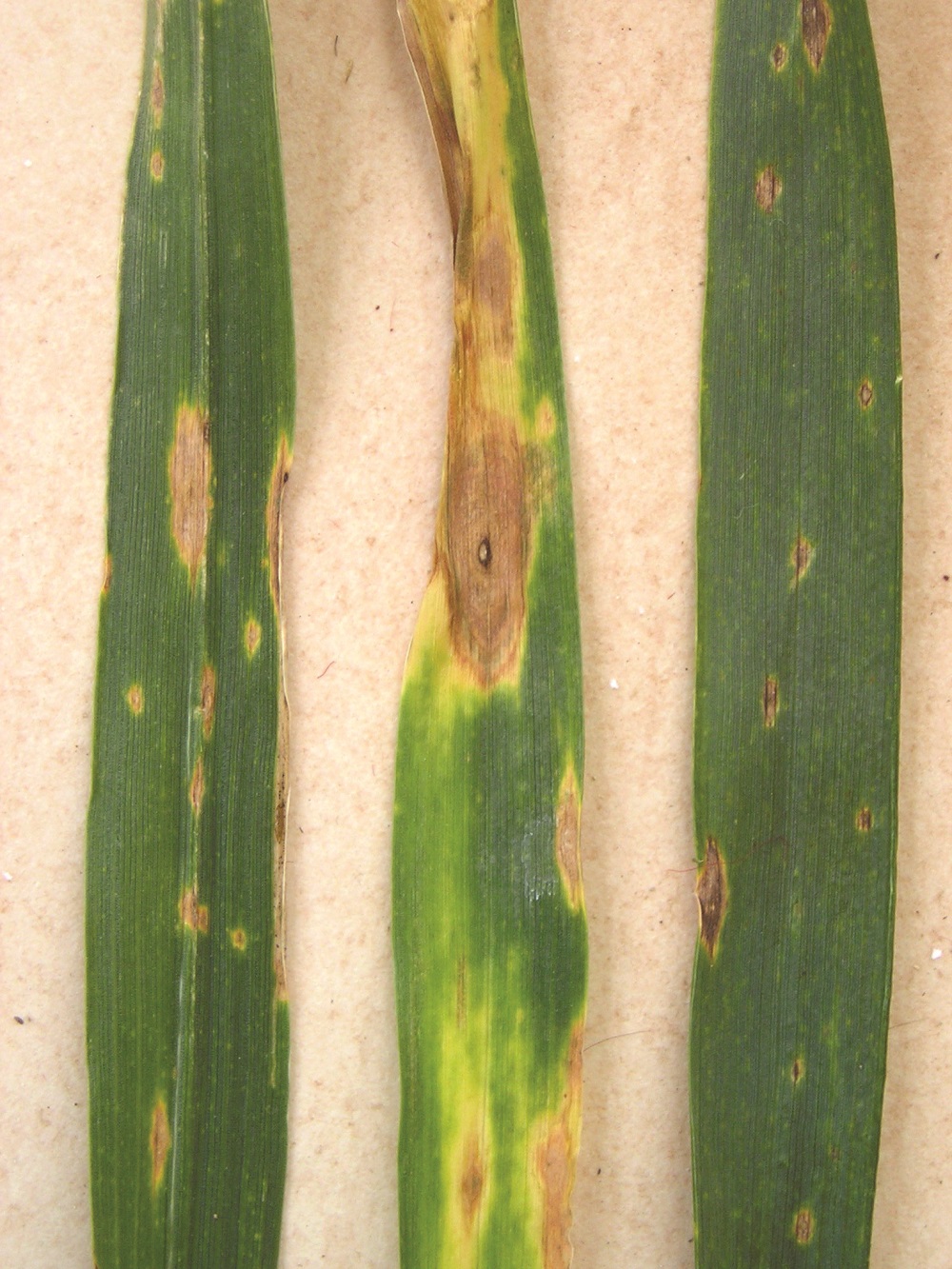- Home
- Knowledge library
- Management of tan spot disease in wheat, barley and rye
Management of tan spot disease in wheat, barley and rye
Occasionally recorded in UK surveys, this foliar disease of wheat, barley and rye, rarely causes serious crop losses. When required, cultural control options can help reduce disease pressure.
Cereal disease management homepage
How serious is tan spot in UK cereals?
Pyrenophora tritici-repentis (Drechslera tritici-repentis) is the pathogen that causes tan spot. It affects wheat but can also attack barley, rye and some grasses.
Tan spot is very common in Sweden, Denmark, Germany and France. However, in the UK, it is only occasionally recorded in disease surveys and rarely causes serious yield or quality (specific weight) losses.
Tan spot symptoms in cereals
The seedborne phase infects seedlings, resulting in small tan-to-light-brown flecks on young leaves. These often have a chlorotic halo with a dark spot at the centre, which expand into elliptical/oval lesions. However, symptoms are generally seen later on leaves and sheaths in the middle and upper canopy. Under wet conditions, lesions produce dark spores. Under ideal conditions, lesions coalesce to produce large areas of dead tissue. Necrosis tends to progress from the leaf tips. Symptoms are very similar to those of septoria nodorum. Correct diagnosis relies on spore identification. Tan spot infected grains can have a reddish appearance, similar to fusarium infection, and the glumes can turn brown.
Tan spot life cycle
The pathogen survives mainly as dormant mycelium on stubble and crop debris. Pseudothecia form on the stubble that produce ascospores. The spores spread large distances by the wind, usually during the spring. Mycelium in infected seed can also be a source. Under warm, wet conditions, lesions produce dark asexual conidia that are rain-splashed up the plant. In severe infections, and when conditions during flowering are conducive to the disease, it can infect the ear, cause discoloration of the glumes and the grain, and infect seed. The disease develops over a wide range of temperatures but has quite a high optimum (20–28° C). It is also favoured by long periods (18 hours or more) of dew or rain. Leaf lesions appear in 7-14 days.
.JPG) AHDB
AHDB
Tan spot risk factors
- Minimum and non-inversion tillage
- Long periods of wet weather from GS32 onwards
- Seed infection
How to manage tan spot risk
- Use non-host crops to extend the rotation
- Minimum tillage favours the disease
- Plough or cultivate to bury infected crop residues or remove residues
- Use clean seed
- Fungicidal control is difficult due to the short latent period but some azoles will help to protect crops from early infection. Specific fungicidal control for tan spot is not usually required

Tan spot lesions often have a dark spot at the centre surrounded by a chlorotic halo
 AHDB
AHDB
Cereal disease management
Visit our main page for disease management in this crop
Topics:
Sectors:
Tags:

